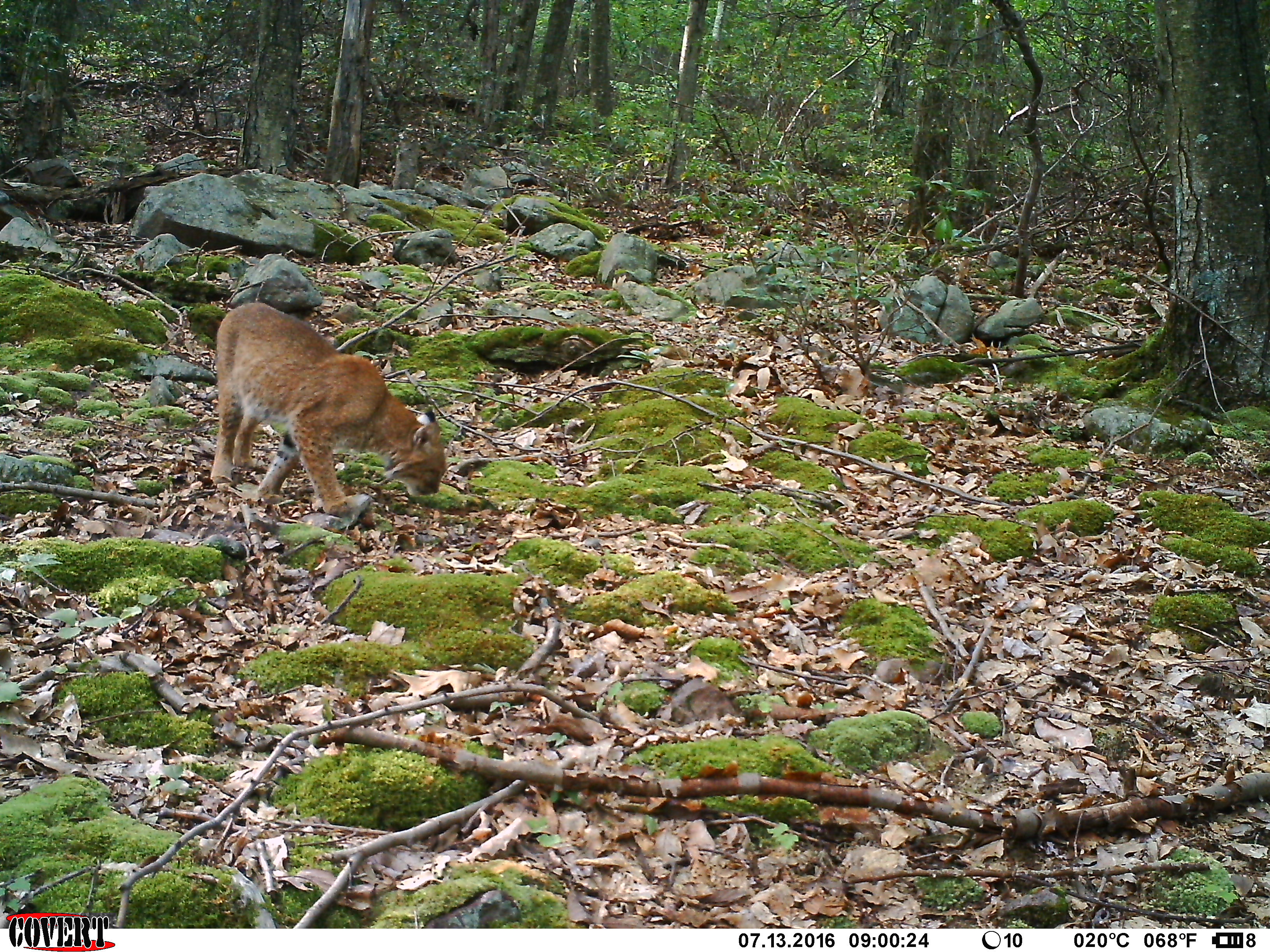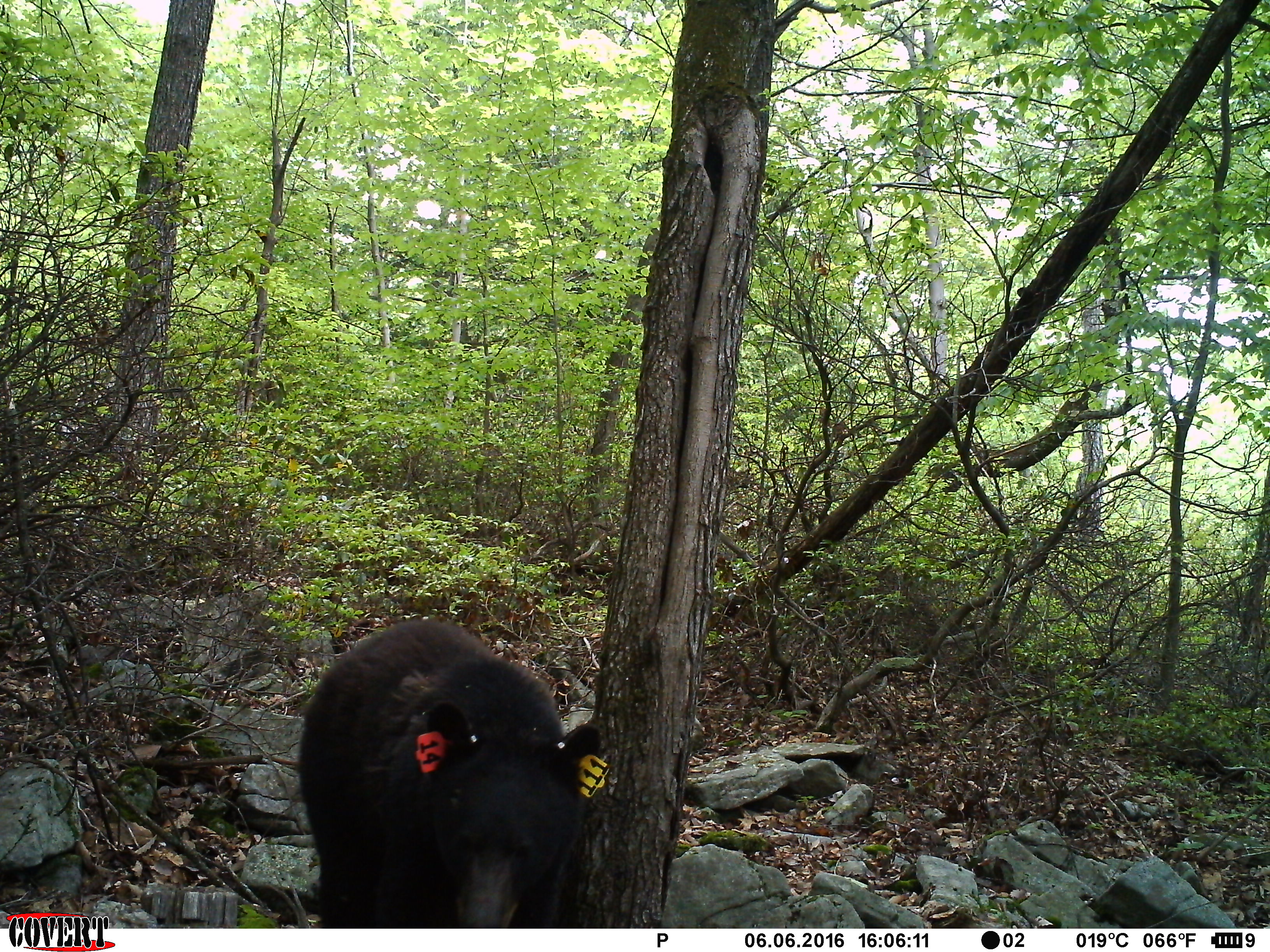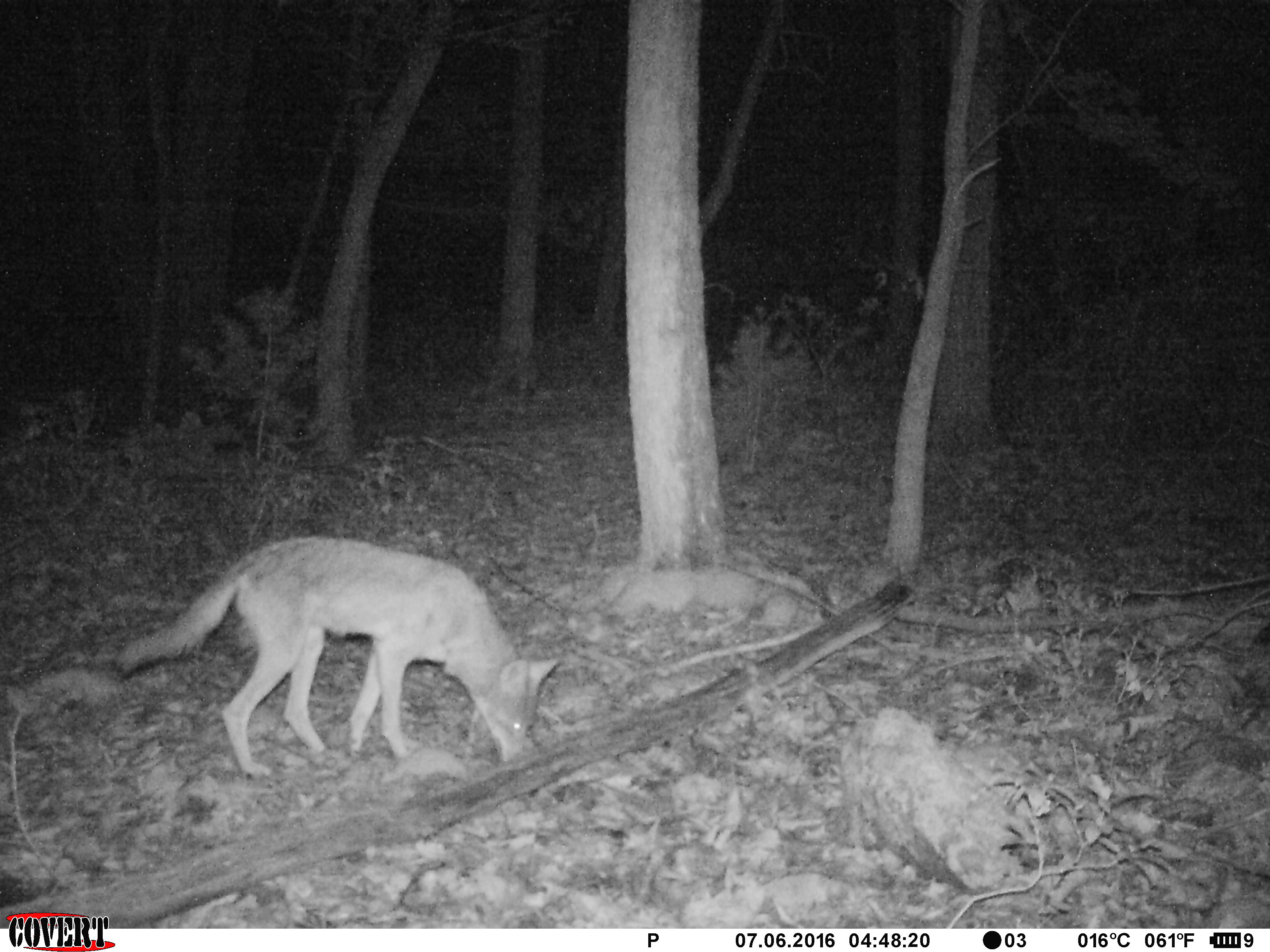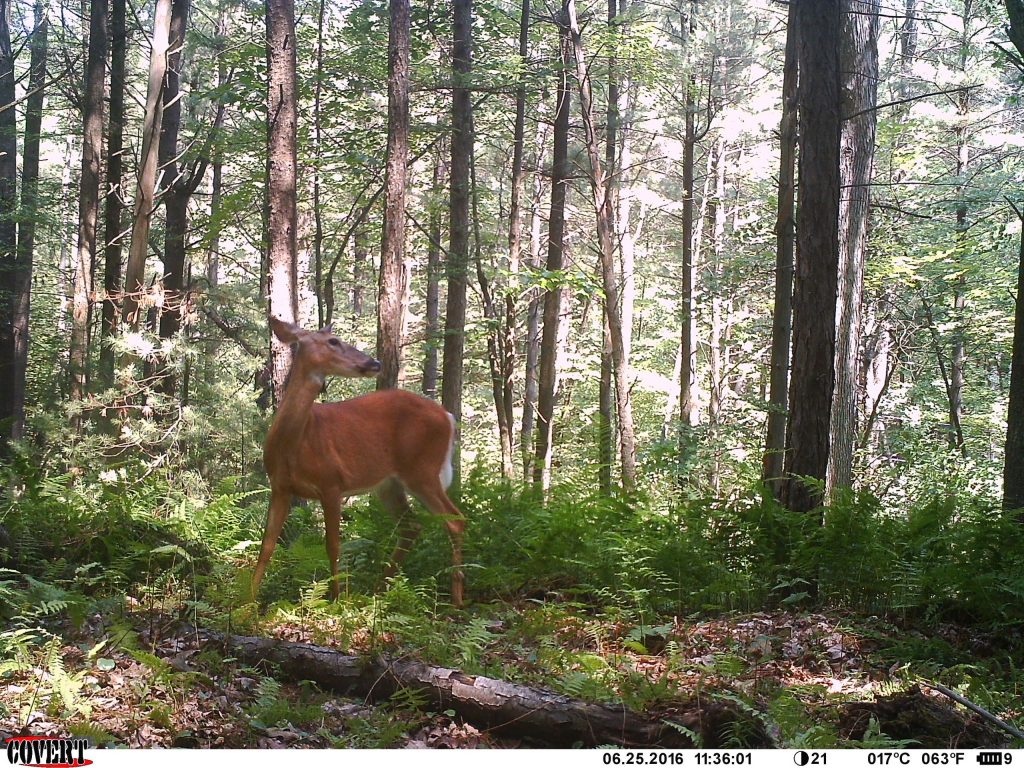Surprise! Sure, the fawns are cute. But that’s just because any baby animal is adorable. Aye-ayes are as ugly as sin, but have you seen a baby aye-aye? You should. Google them.
(Actually, it seems there’s only one photogenic baby aye-aye, and it lives at Durrell Wildlife Park. Check that one out. Don’t look at the other ones.)
Back to the point: I’m not a deer-crazed wildlife student and it was never my childhood dream to work with cervids. So why am I in Pennsylvania working on the Deer-Forest Study? Because I am crazy about the carnivores that eat deer. Black bears, coyotes, bobcats…a fawn’s first year of life is like a huge game of hide-and-seek with multiple seekers, and if that deer is found, it does more than just lose a game. It loses its life. Yikes!
And—lucky me!—for the next four years, I’ll be examining the ins and outs of this hide-and-seek game via camera traps scattered throughout state forests.
Things like where the carnivores are in the state forests, what habitats they are using, and which of these habitats are a guaranteed win for predators and loss for fawns are all on the list.

I’ll be determining black bear abundance using fashionable ear jewelry (read: ear tags) via the forest selfie.

Finally, I’ll be looking at how bobcats, coyotes, and black bears are using space and time to live in the same area and how that influences fawn mortality. Think of these three species as roommates and fawns as delicious, chocolate-frosted donuts [we know they come in different flavors]. Fawns are uncommon, calorie-filled commodities that everyone wants, but not everyone can have. Will the bears dominate the smaller coyotes and bobcats? Will bobcats use sneaky tactics to snatch fawns right out from under coyotes? Stay tuned.

Over the next year, I’ll be writing bite-sized posts on various aspects of carnivore ecology in Pennsylvania, and exactly how I’m going to turn pretty pictures into data that the Game Commission can use to manage wildlife in Pennsylvania.
So let the games begin!
Ph.D. graduate student
If you would like to receive email alerts of new blog posts, subscribe here.
And Follow us on Twitter @WTDresearch
